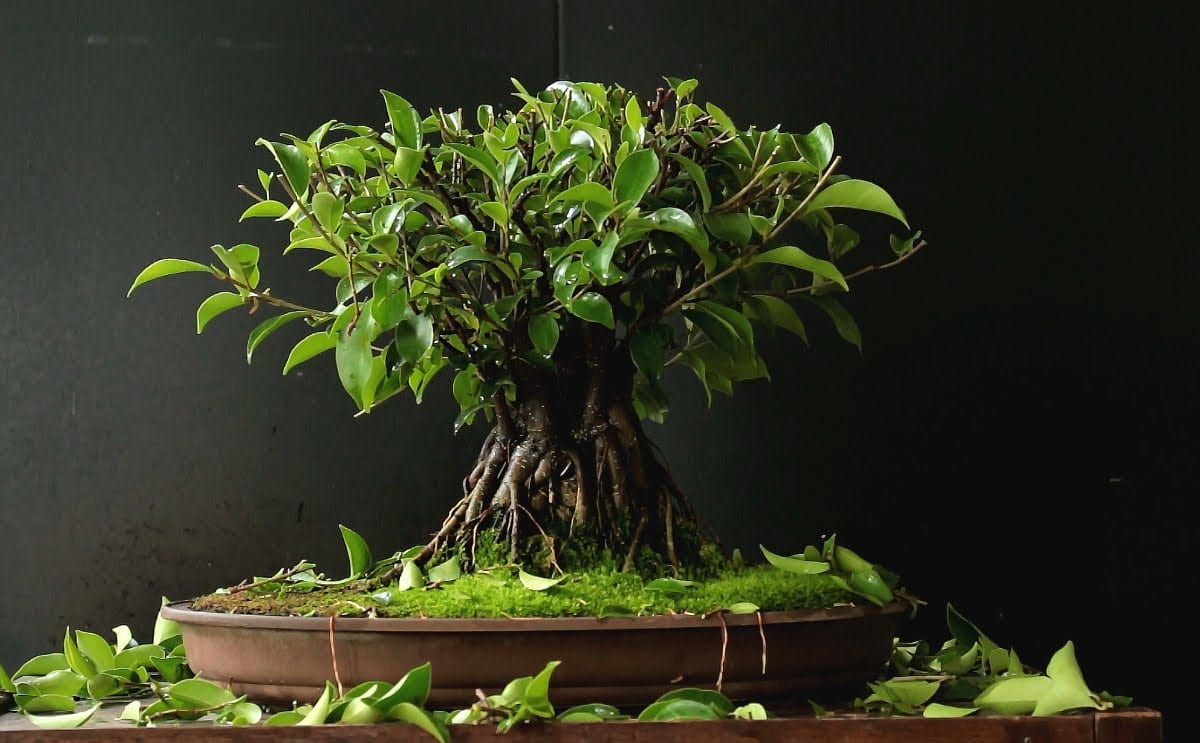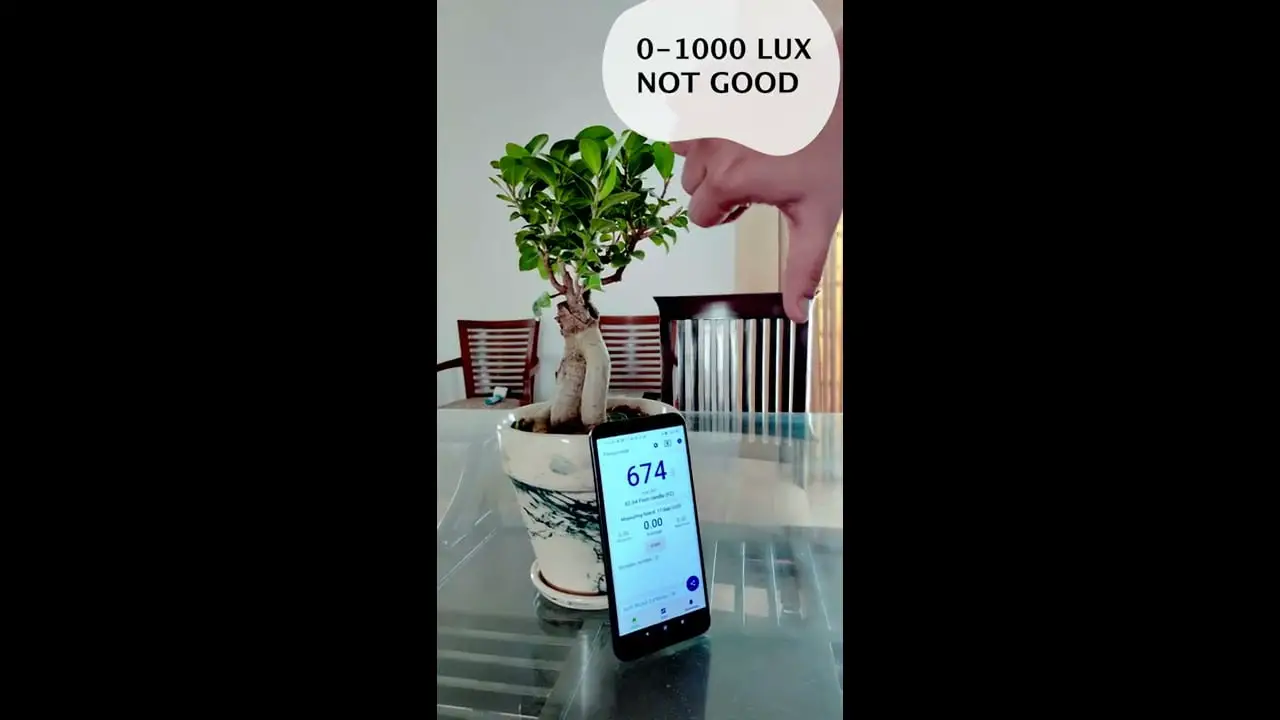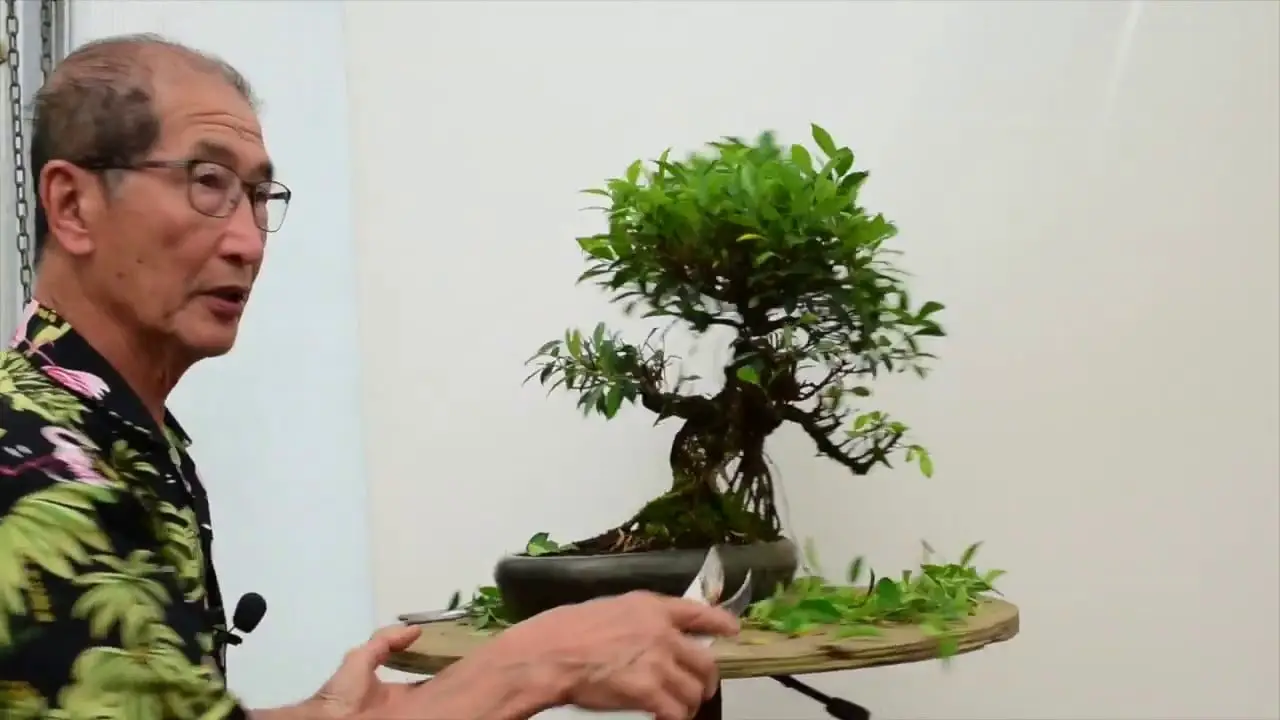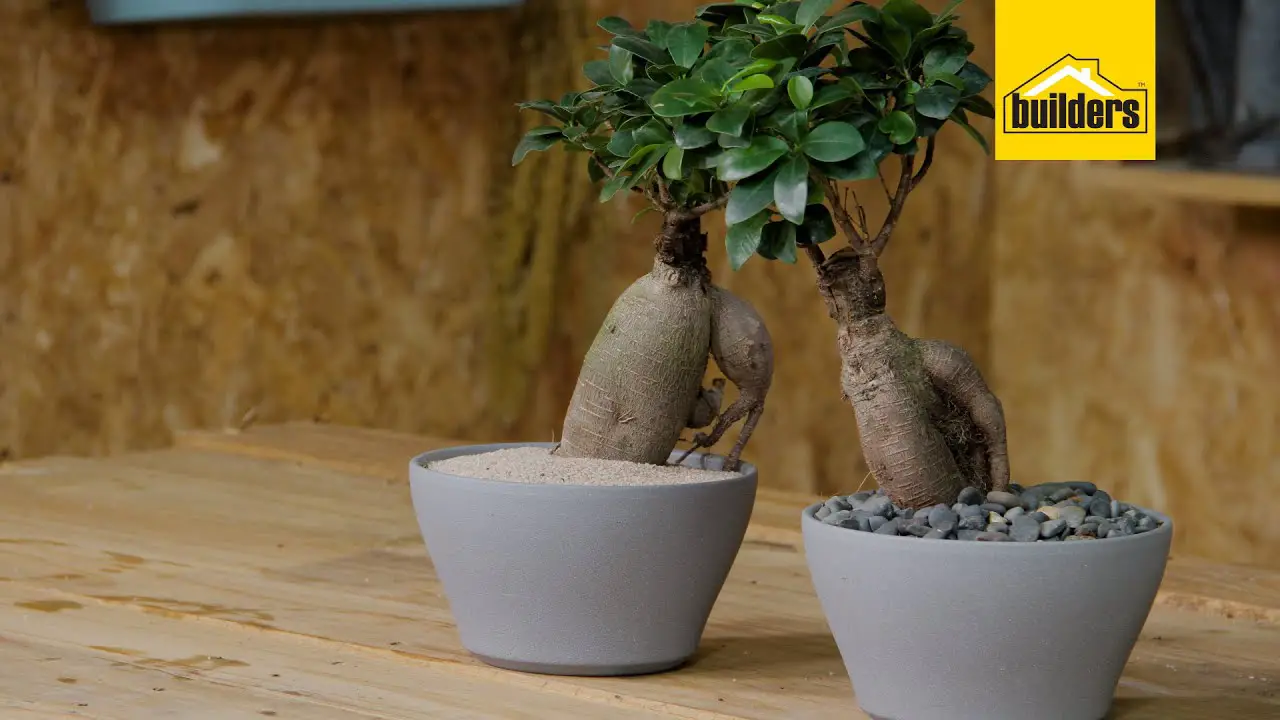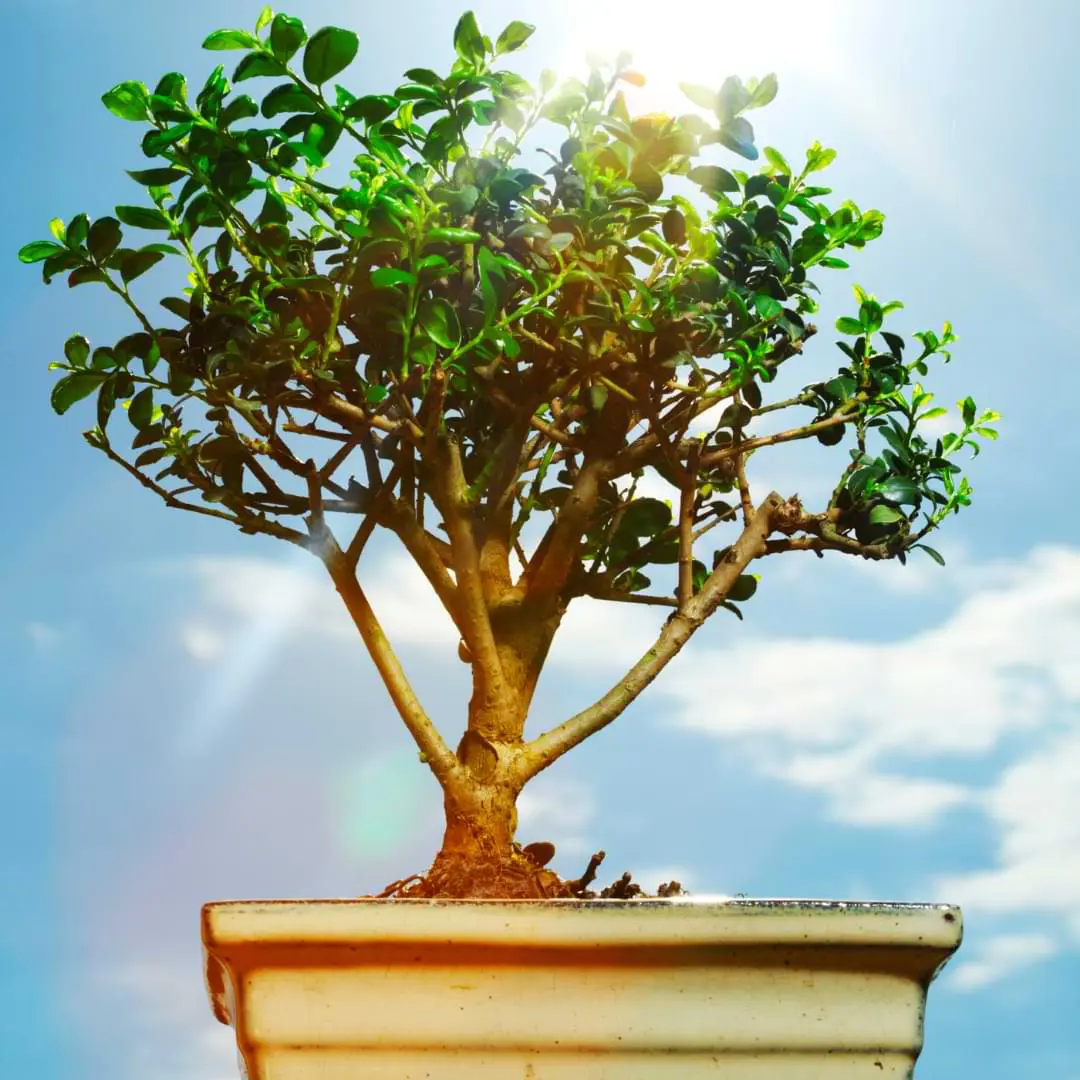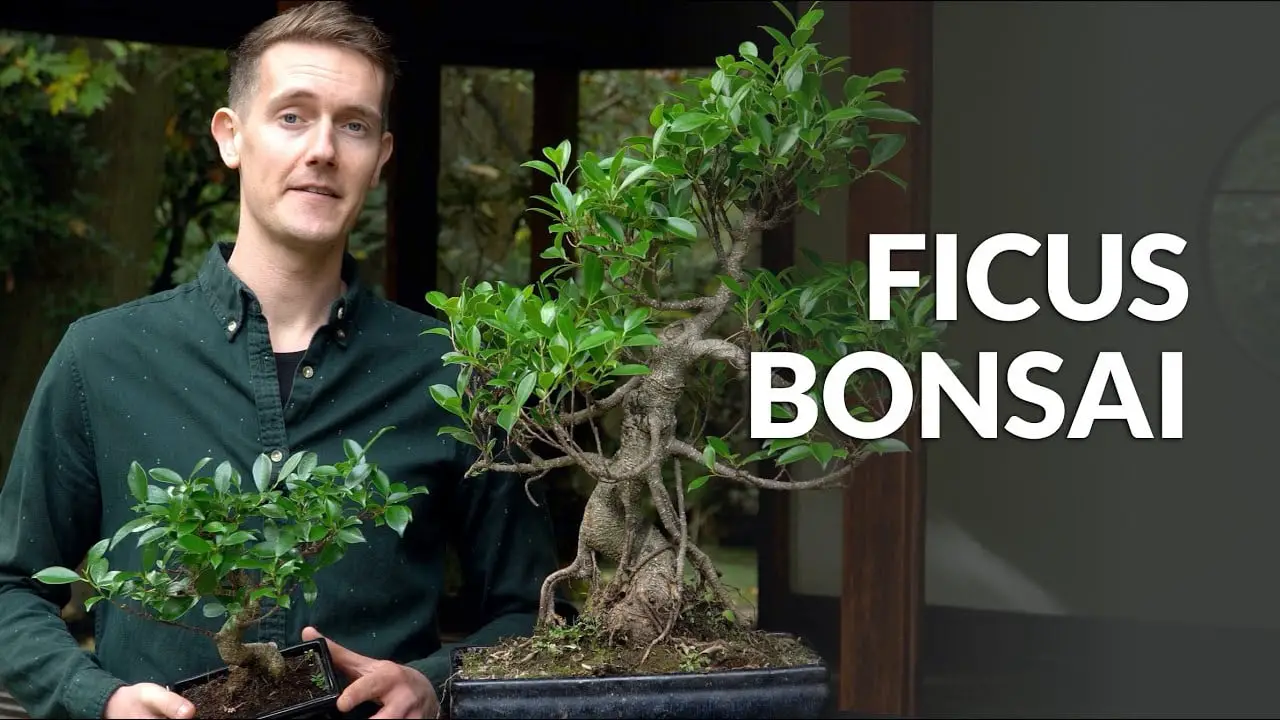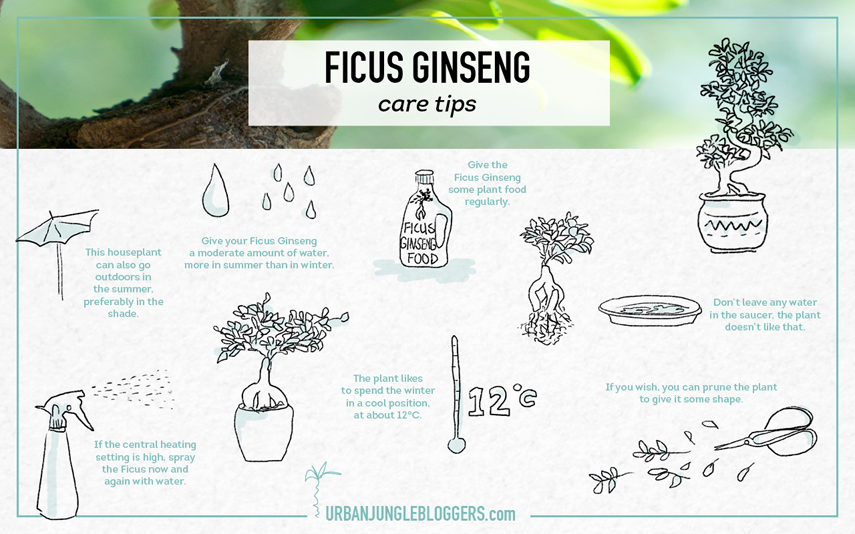Welcome to the world of Ficus Bonsai! Ficus Bonsai is an ancient art form that has been practiced for centuries. It is a unique way of growing and styling miniature trees, that have been shaped and trained to look like full grown trees.
There are many different types of Ficus Bonsai, such as the Benjamina, Microcarpa, Banyan, Cascade, and Aerial Root. Each type of Ficus Bonsai is unique, and has its own set of design and pruning techniques.
A Ficus Bonsai is a miniature version of a full-grown fig tree. It is often referred to as a “tiger bark” because of its unique bark, which resembles that of a tiger. Ficus Bonsai can be styled in a variety of ways, from windswept to cascade, and even leaf designs. One popular style is the Vietnamese style, which is characterized by its long sweeping branches and thick foliage.
Pruning is an important part of Ficus Bonsai care. Pruning is used to shape the tree and encourage new growth. It is also used to control the size of the tree and reduce the amount of foliage. Pruning should be done carefully and with precision, as it can damage the tree if done incorrectly.
We hope this introduction to Ficus Bonsai has been helpful. If you are interested in learning more about this unique art form, be sure to check out our other blogs, which will provide more detailed information. Thank you for joining us on this journey to discover the wonderful world of Ficus Bonsai!
Overview of Ficus Bonsai
Welcome to a comprehensive overview of Ficus Bonsai! Ficus Bonsai is a type of miniature tree that can be grown indoors. It is a popular type of bonsai due to its small size and adaptability to indoor conditions. Ficus Bonsai is available in several varieties, including Ficus Benjamina, Ficus Microcarpa, Ficus Banyan, Ficus Cascade, Ficus Aerial Root, and Ficus Full Grown.
In this article, we will discuss the characteristics of each type of Ficus Bonsai, as well as the techniques used to prune and design the trees.
- Ficus Benjamina is a popular choice for Ficus Bonsai due to its small size and delicate nature. The leaves of Ficus Benjamina are small and oval-shaped, and the branches are thin and flexible. This type of Ficus Bonsai is ideal for beginners, as it is easy to care for and can be pruned without much difficulty.
- Ficus Microcarpa is a less common type of Ficus Bonsai that is well-suited for indoor conditions. This type of Ficus Bonsai has larger leaves than Ficus Benjamina, and its branches are thicker and less flexible. This type of Ficus Bonsai is best suited for experienced bonsai growers, as it requires more pruning and care.
- Ficus Banyan is a type of Ficus Bonsai that is native to Southeast Asia. This type of Ficus Bonsai has large leaves and thick branches, and it can be pruned to create an interesting shape and design. This type of Ficus Bonsai is ideal for experienced bonsai growers, as it requires more attention and care.
- Ficus Cascade is a type of Ficus Bonsai that is native to Vietnam. This type of Ficus Bonsai has thin branches and small leaves, and it can be pruned to create a cascading effect. This type of Ficus Bonsai is ideal for experienced bonsai growers, as it requires more attention and skill to create the desired shape
Types of Ficus Bonsai
A Ficus Bonsai is a type of tree that is trained and pruned to look like a miniature version of a full-sized tree. Bonsai trees are often used as decoration or for relaxation purposes. Ficus Bonsai can be found in many varieties, each varying in shape, size, and appearance. In this blog, we will discuss the different types of Ficus Bonsai available, as well as the best way to care for and maintain them.
The first type of Ficus Bonsai is the indoor variety. These Bonsais are perfect for those who are looking for a low maintenance tree that can be kept indoors. The Ficus Benjamina is a popular type of indoor bonsai that is easy to care for and maintain. It is a tropical tree that can be pruned into different shapes, such as a tree, bush, or a pyramid.
The second type of Ficus Bonsai is the Ficus Microcarpa. This type of Bonsai is a more ornamental tree that is ideal for those who are looking for a beautiful, yet low-maintenance tree. It has a unique leaf shape and is easy to prune and shape. It is also a great choice for those looking to create a bonsai design.
The third type of Ficus Bonsai is the Banyan Bonsai. This type of Bonsai is perfect for those who want a large, full-grown tree. The Banyan tree is an evergreen tree that can grow to be very large and has a distinctive, umbrella-like shape. It is also a great choice for those looking to create a bonsai design.
The fourth type of Ficus Bonsai is the Cascade Bonsai. This type of Bonsai is perfect for those who want a tall, cascading tree. The Cascade Bonsai is an evergreen tree that has an aerial root system and can be pruned to create a unique design. It is also a great choice for those looking to create a bonsai design.
Indoor Benjamin
A Indoor Benjamin is a type of Ficus Bonsai that is generally grown indoors. The most popular type of indoor Benjamin is the Ficus Benjamina Microcarpa, also known as the Banyan tree, but other varieties are also cultivated, such as the Cascade, Windswept, and Tiger Bark.
The Benjamin is a full-grown fig tree, with a thick, tall trunk and heavy foliage. It is known for its unique leaf design, which is both lush and beautiful. The leaves are generally oval-shaped, with a pointed tip, and can be either solid green or speckled with white.
When it comes to caring for a Indoor Benjamin, there are a few important things to keep in mind. First, it needs to be pruned regularly to keep it in a desired shape. This can be done with either hand tools or electric tools, depending on the size and health of the tree.
Second, the Benjamin needs to be protected from cold temperatures. It is best to place it in a warm, humid location away from drafts. If possible, it should be placed away from direct sunlight.
Finally, it is important to keep the soil moist, but not too wet. The soil should be kept evenly moist, but not overly saturated. Overwatering can lead to root rot, which can be fatal to the tree.
By following these simple guidelines, you can ensure that your Indoor Benjamin stays healthy and beautiful. With the right care and attention, your Benjamin will be a beautiful addition to your home for years to come.
Microcarpa
Ficus Microcarpa is a type of fig tree that is commonly used to create bonsai. This species of fig tree is known for its vigorous growth, allowing it to be pruned into a variety of shapes and designs. It is often used for indoor bonsai, and is a popular choice for many bonsai enthusiasts due to its hardiness and adaptability.
While Ficus Microcarpa is not as popular for outdoor bonsai as Ficus Benjamina, it has several advantages. It is more resistant to cold and drought than other species of fig tree, and it is also a fast-growing species. This makes it an ideal choice for those who want to create a bonsai in a short amount of time.
Ficus Microcarpa is also known for its aerial roots, which are long, thin roots that grow from the trunk of the tree and hang downwards. This is why it is sometimes called the Banyan Tree or the Cascade Style Bonsai. These aerial roots can be used to create unique designs and patterns, and can be trained to create a full-grown, mature bonsai in a relatively short amount of time.
The leaves of Ficus Microcarpa are also unique. They are small and arrow-shaped, which gives them a distinctive look. The leaves are a dark green color, and some varieties have a silver-tipped edge that adds a unique look to the bonsai.
Ficus Microcarpa is also known for its unique bark. Some varieties have a tiger-like striped pattern, while others have a more uniform color. This makes it a popular choice for those who want to create a unique bonsai design.
Finally, Ficus Microcarpa is also known for its ability to create a windswept look. This is achieved by pruning the branches in a certain way, so that they appear to be swept back by the wind. This look is especially popular in Vietnamese bonsai, as it is believed to represent the winds of change.
Overall, Ficus Microcarpa is an excellent choice for those looking for a unique bonsai tree. It has a distinctive bark, and the ability to create a windswept look, making it a popular choice for bonsai enthusiasts.
Banyan
The Banyan is an incredibly unique bonsai tree that has been growing in popularity in recent years. It is related to the Ficus bonsai, which is a type of fig tree. The Banyan is a bonsai that has been trained to grow in a cascading style, creating an interesting and eye-catching design. The Banyan can be grown indoors or outdoors, and it is typically found in a variety of sizes.
The Banyan is most often found in the Ficus benjamina variety, but can also be found in the Ficus microcarpa variety. Both varieties are known for their aerial roots, which protrude from the trunk of the tree, creating a unique design. The aerial roots are especially noticeable when the C Banyan is full grown, and they can be trained to create a variety of shapes and designs.
The Banyan is also known for its unique leaf patterns. In the Ficus benjamina variety, the leaves are typically oval-shaped with a pointed tip. In the Ficus microcarpa variety, the leaves are more triangular with a serrated edge. The leaves are typically a deep green color, although some varieties have a light green or even a yellow hue.
The Banyan can also be found in a variety of styles, including the Tiger Bark, Windswept, and Vietnamese styles. In the Tiger Bark style, the aerial roots are carefully pruned and trained to grow in a downward-sloping pattern. The Windswept style is a more open and airy style, featuring larger aerial roots with a more angular design.
The Vietnamese style is a more compact and dense style, with aerial roots that are carefully trained to create a unique pattern.
The Banyan is an incredibly unique bonsai tree that can add a touch of beauty and sophistication to any indoor or outdoor space. With its unique leaf patterns, cascading designs, and carefully trained aerial roots, the Banyan is sure to be a conversation starter. Whether you choose the Tiger Bark, Windswept, or Vietnamese style, the Banyan is sure to make a statement in any environment.
Cascade
The Cascade is a type of Ficus Bonsai Aerial Root that is popular among indoor gardeners. It is a full grown fig tree with an unique cascading aerial root structure, and is most commonly seen in the species Ficus Benjamina, Ficus Microcarpa, and Ficus Banyan. As its name implies, the D Cascade is characterized by a U-shaped aerial root system that cascades downward in a “D” shape.
The Cascade has become a popular choice for bonsai enthusiasts because of the unique look it provides. Its cascading aerial root system provides an interesting contrast to the more traditional upright form of bonsai trees. The Cascade can be used to create a variety of designs, from a more traditional upright form to a more modern and abstract look.
The Cascade is also popular due to its low maintenance requirements. The aerial root system is self-sustaining and requires minimal pruning. It is also less susceptible to pests and diseases than other types of bonsai trees.
The Cascade is often seen in Vietnamese bonsai designs. It is also popular with bonsai enthusiasts who are looking to create a more modern or abstract look. The Cascade can be trained in a variety of ways, including a more traditional upright form, a windswept look, or a leaf-only design.
In conclusion, the Cascade is a type of Ficus Bonsai Aerial Root that is popular among indoor gardeners. Its cascading aerial root system provides an interesting contrast to the more traditional upright form of bonsai trees, and its low maintenance requirements make it a great choice for those looking to create a unique bonsai design. It is also popular in Vietnamese bonsai designs and can be trained in a variety of ways, including a more traditional upright form, a windswept look, or a leaf-only design.
Characteristics of Ficus Bonsai
Ficus Bonsai is a type of bonsai tree that has been cultivated for centuries. It is a unique type of miniature tree that is often grown indoors and can be shaped into various forms. Ficus bonsai are easy to care for and can be grown in a variety of sizes and shapes. They are often used as decorative pieces in home and office settings.
Ficus bonsai can come in many different varieties, such as Ficus benjamina, Ficus microcarpa, Ficus banyan, and Ficus cascade. Each type has its own unique characteristics that can be used to create beautiful and interesting designs. For example, the Ficus benjamina has a beautiful leaf structure and a graceful shape that can be used to create a stunning bonsai. The Ficus microcarpa, on the other hand, has a more rugged look that can be used to create a more rugged bonsai.
Ficus bonsai can also be grown into various sizes and shapes. For instance, a full-grown Ficus banyan can reach up to 15 feet in height. Similarly, a fig tree can reach up to 30 feet in height. A tiger bark Ficus can reach up to 40 feet in height. A windswept Ficus can reach up to 50 feet in height.
The leaf design of a Ficus bonsai can also be used to create unique and interesting designs. For instance, the Ficus benjamina has a classic feather-shaped leaf. The Ficus microcarpa has a unique star-shaped leaf. The Ficus banyan has a unique fan-shaped leaf. The Ficus cascade has a unique cascading leaf.
The Vietnamese style of pruning can also be used to create a unique and interesting look for a Ficus bonsai. This style of pruning involves trimming the branches of the tree in a way that creates a cascading effect. This style of pruning can be used to create a unique and interesting look for any Ficus bonsai.
In conclusion, Ficus bonsai are easy to care for and can be grown in a variety of shapes and sizes. They can be pruned in a variety of styles, including the traditional Japanese style and the newer Vietnamese style, to create a unique and interesting look.
By combining the leaf design of the tree with the pruning technique, a unique and interesting look can be created for any Ficus bonsai.
Aerial Roots
Aerial roots are a type of root system found in some trees and plants that grow above the ground surface. These aerial roots are typically associated with fig trees, such as Ficus bonsai, Ficus benjamina, Ficus microcarpa, Ficus banyan, and Ficus cascade. These types of roots are well-suited for climbing and provide a unique look to the plant.
Aerial roots can reach a full-grown length of several feet and can be found on the trunk or branches of the tree. The fig tree is an excellent example of aerial root growth, with long, winding aerial roots reaching from its trunk or branches. These aerial roots are often used for support and to attach to other surfaces.
Aerial roots also play an important role in the design of bonsai trees. By strategically pruning and training the aerial roots of a bonsai, you can achieve a variety of designs, from a Vietnamese waterfall style to a classic windswept look. Pruning the aerial roots is also important for controlling the growth of the bonsai and maintaining its shape.
The aerial roots of a fig tree can also be used to create an interesting design. By strategically pruning the aerial roots and allowing them to hang down from the branches, you can create a unique leafy canopy. This is particularly popular with Ficus microcarpa, also known as the Tiger Bark fig, which has long, thin aerial roots that hang down from its branches.
Aerial roots can be a fascinating feature of your bonsai or fig tree, adding an interesting and unique look to the plant. By carefully pruning and training the aerial roots, you can create a wide variety of designs and leafy canopies. Whether you’re creating a Vietnamese waterfall or a classic windswept look, aerial roots can be a beautiful addition to your bonsai or fig tree.
Full Grown Fig Tree
A full grown fig tree is an amazing specimen to behold. It can be a source of beauty and wonder for any home or garden and can bring a great deal of joy to those who take care of it. Fig trees come in a variety of shapes, sizes, and textures, and they have a unique ability to adapt to many different environments. From the banyan tree of India, to the cascade design of the Vietnamese fig tree, there is a fig tree for everyone.
The Ficus Bonsai is a type of fig tree that can be grown indoors. It is an ideal tree for those who want to bring a bit of the outdoors into their homes. The Ficus Bonsai is a miniature version of a full grown fig tree, which makes it a great choice for those who want to save space and still enjoy the beauty of a fig tree.
This type of fig tree is also very versatile, and can be pruned and shaped into a variety of different designs, such as the classic bonsai, the windswept leaf design, or even the tiger bark design.
The Ficus Microcarpa is another type of fig tree that can be grown indoors. This type of fig tree is often referred to as the “dwarf fig tree” because it is smaller than the banyan tree. The Microcarpa is a hardy tree, and can survive in a variety of different environments. This type of fig tree is also very easy to care for, as it does not require a lot of pruning or maintenance.
No matter which type of fig tree you choose, you are sure to enjoy the beauty and serenity of a full grown fig tree in your home or garden. Whether you choose a banyan tree, a cascade design, or a windswept leaf design, you will be able to enjoy the beauty of a full grown fig tree.
A full grown fig tree can be a source of beauty and wonder for any home or garden, and can bring a great deal of joy to those who take care of it.
Tiger Bark
Tiger Bark is a type of Ficus Bonsai that is prized for its unique and beautiful look. The bark of this variety has a unique striped pattern, resembling that of a tiger, hence its name.
Tiger Bark Ficus Bonsai is generally an indoor Bonsai, and while it can be grown outdoors, it will not reach its full potential as an indoor Bonsai. The most popular varieties of Tiger Bark Ficus Bonsai are Benjamina, Microcarpa and Banyan.
Tiger Bark Ficus Bonsai is generally grown in a cascade style, with aerial roots forming along the trunk of the tree. This creates a unique and visually striking look, as the aerial roots seem to be “hugging” the trunk of the tree. The aerial roots can also be trained into a specific design, creating a beautiful and unique look to the Bonsai.
Unlike other types of Ficus Bonsai, Tiger Bark Ficus Bonsai is not able to be pruned into a windblown or windswept style. This is due to the unique pattern of stripes on the bark of the tree, which makes it difficult to create this look. Instead, the C Tiger Bark Ficus Bonsai should be pruned in a more traditional style, such as a broom shape or a cloud shape.
Tiger Bark Ficus Bonsai is a very popular type of Bonsai, with many enthusiasts around the world. It has been used for centuries in Vietnamese and Chinese culture, and is now gaining popularity in other parts of the world. Tiger Bark Ficus Bonsai is a great choice for anyone looking for a unique and beautiful Bonsai tree.
With its unique bark pattern and cascade style, it is sure to be an eye-catching addition to any home or garden.
Windswept Leaf Design
Welcome to the world of Windswept Leaf Design for Ficus Bonsai trees! This unique and artistic style of bonsai is perfect for those looking to create a truly dramatic and eye-catching display in their home or office.
Windswept Leaf Design is an art form that involves the careful pruning and shaping of bonsai trees to create a distinct shape that resembles the wind-swept leaves of a fig tree. This style of bonsai is often seen in both indoor and outdoor settings, making it a great choice for those looking to add a touch of natural beauty to any space.
The Windswept Leaf Design is perfect for all types of Ficus Bonsai, including the Benjamina, Microcarpa, Banyan, Cascade, and Aerial Root varieties. This style of bonsai is usually seen in full grown trees, as it requires more mature foliage to create the desired effect.
The Vietnamese style of pruning is often used to achieve the Windswept Leaf Design. This involves cutting the trunk of the tree in a curved arc shape, which encourages the growth of branches that reach out in a wind-swept manner. This style of pruning is most commonly used on Tiger Bark Ficus Bonsai trees, as the bark creates a dramatic contrast with the bright green of the leaves.
The Windswept Leaf Design is an excellent way to add a unique and dramatic touch to any Ficus Bonsai. With careful pruning and shaping, you can create a beautiful and eye-catching display that will be the envy of all who see it!
Vietnamese Pruning
Vietnamese Pruning is a type of bonsai pruning technique that is used to shape a bonsai tree, such as a Ficus bonsai, into a desired shape. It is a popular pruning technique among bonsai enthusiasts and is often used to create unique and artistic bonsai designs.
The technique involves carefully cutting and shaping the aerial root of the bonsai tree in order to create a desired design. This technique is most commonly used on indoor bonsai trees such as Ficus benjamina, Ficus microcarpa, Ficus banyan, and Ficus cascade, although it can be applied to other types of bonsai as well.
The goal of Vietnamese Pruning is to create a visually pleasing design that is both aesthetically pleasing and suitable for the type of tree being pruned. When pruning a bonsai tree, the aerial root should be trimmed to the desired shape and then wired to maintain the desired shape. This can be done with either copper or aluminum wire.
Once the aerial roots have been wired into place, they can then be shaped and pruned further to create a desired design. The pruning should be done carefully in order to ensure that the desired design is maintained and that the tree is not damaged in the process.
Vietnamese Pruning is a great way to create unique bonsai designs that can be used to create a stunning display in any home or office. The technique can be used to create both full grown and miniature bonsai designs, such as a fig tree, tiger bark, windswept, or leaf designs.
This pruning technique is relatively easy to learn and can be mastered with some practice. It is important to remember to take your time when pruning and always use the right tools for the job. With patience and practice, anyone can create beautiful and unique bonsai designs using E Vietnamese Pruning.
The Ficus Bonsai is a versatile and beautiful bonsai tree that can be grown indoors or outdoors, depending on the variety. There are many types of Ficus Bonsai, including the Benjamina, Microcarpa, Banyan, Cascade, and Aerial Root, all of which offer unique challenges and rewards to the bonsai enthusiast. The Ficus is a great choice for a full grown bonsai, as it can reach heights of up to 3 meters (10 feet).
The Ficus Bonsai has a wide range of leaf shapes and sizes, as well as a wide range of trunk and branch shapes. The most popular leaf shapes for a Ficus bonsai are the fig tree, tiger bark, windswept, and the Vietnamese design. The pruning of a Ficus Bonsai is also unique, as it requires a specific technique to ensure the best results.
In conclusion, the Ficus Bonsai is a great choice for those looking to create a beautiful bonsai tree. With its wide range of leaf shapes, trunk sizes, and pruning techniques, the Ficus Bonsai is a great tree for the dedicated bonsai enthusiast. With the proper care and attention, a Ficus Bonsai can provide years of enjoyment.
The Best-Kept Secrets of Ficus Bonsai Success: Tips and Tricks Revealed








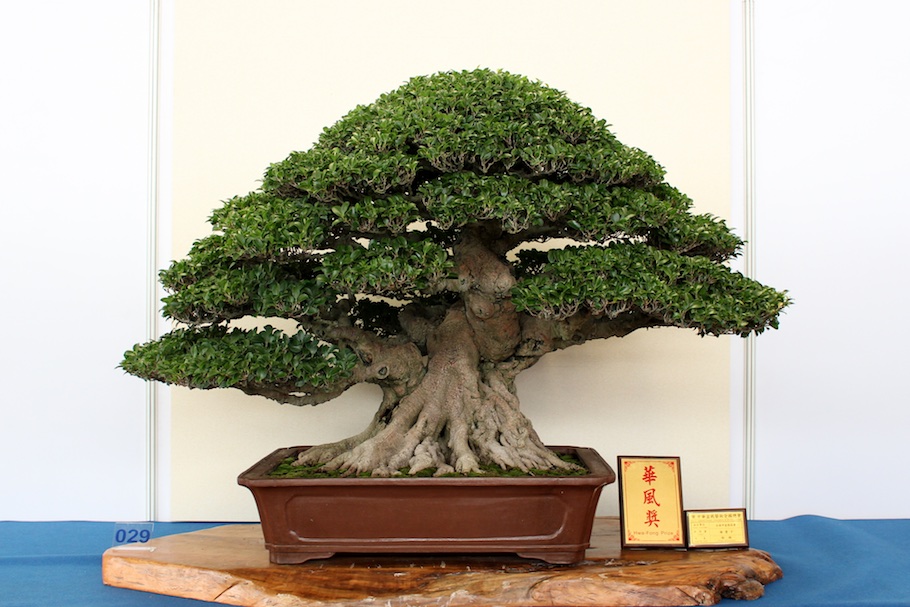

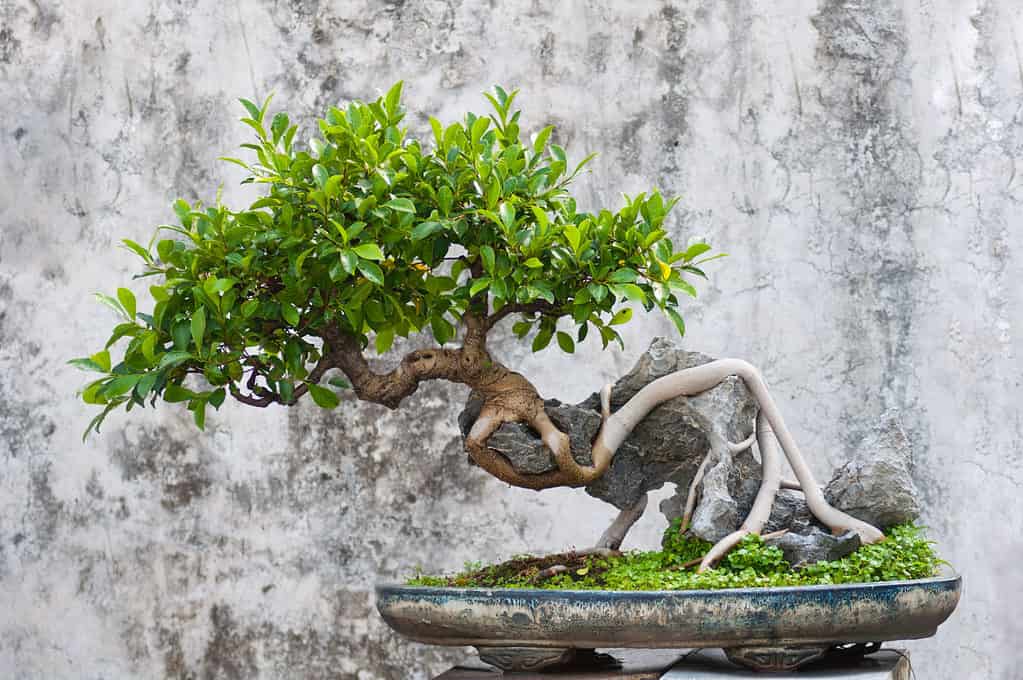
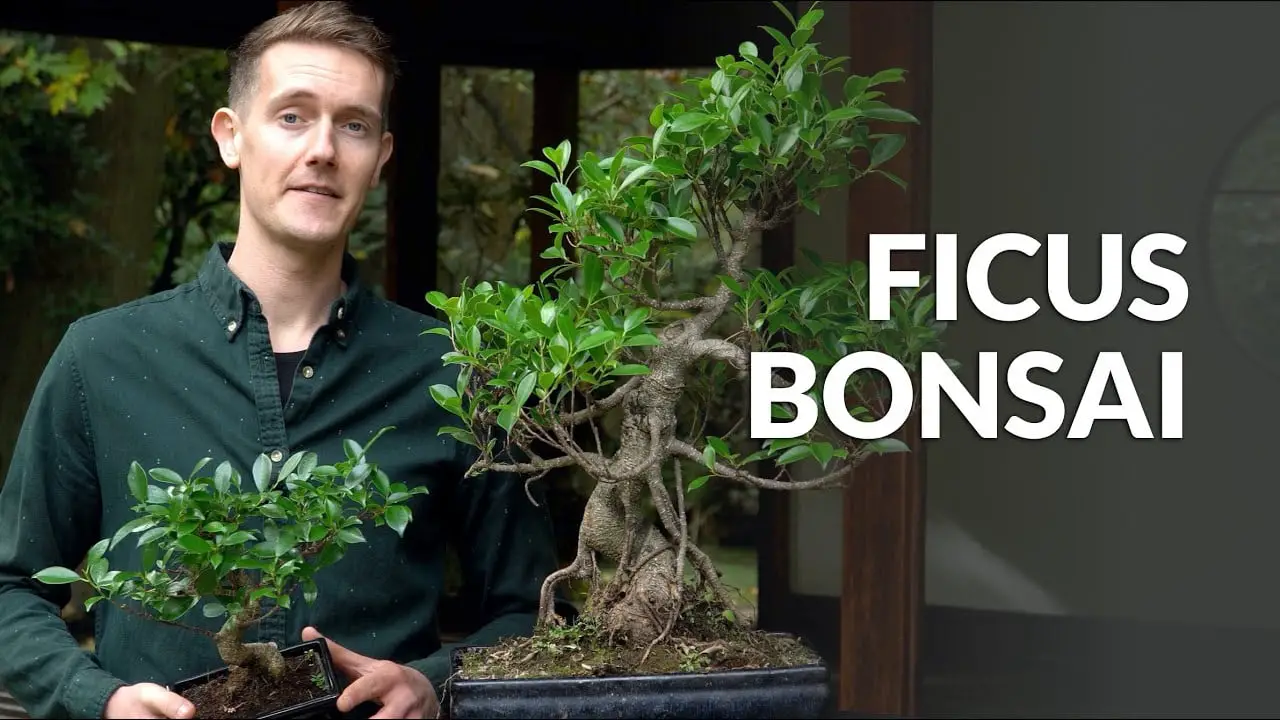

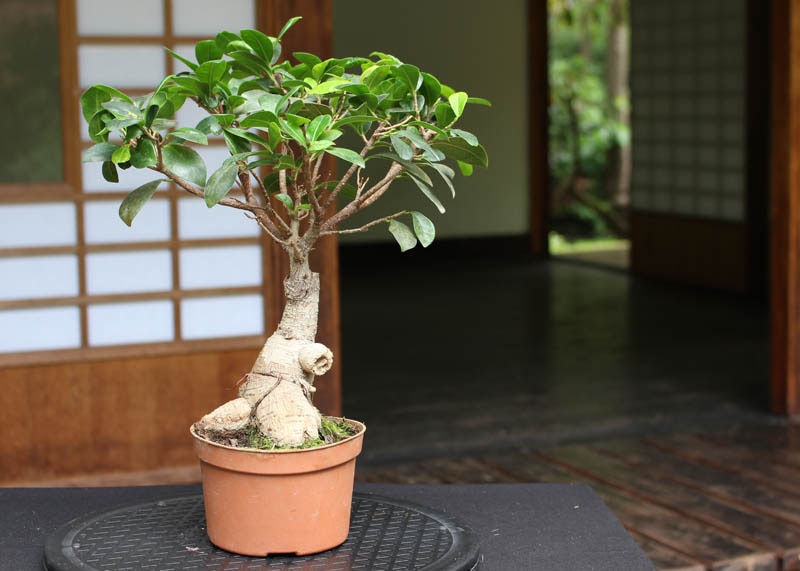
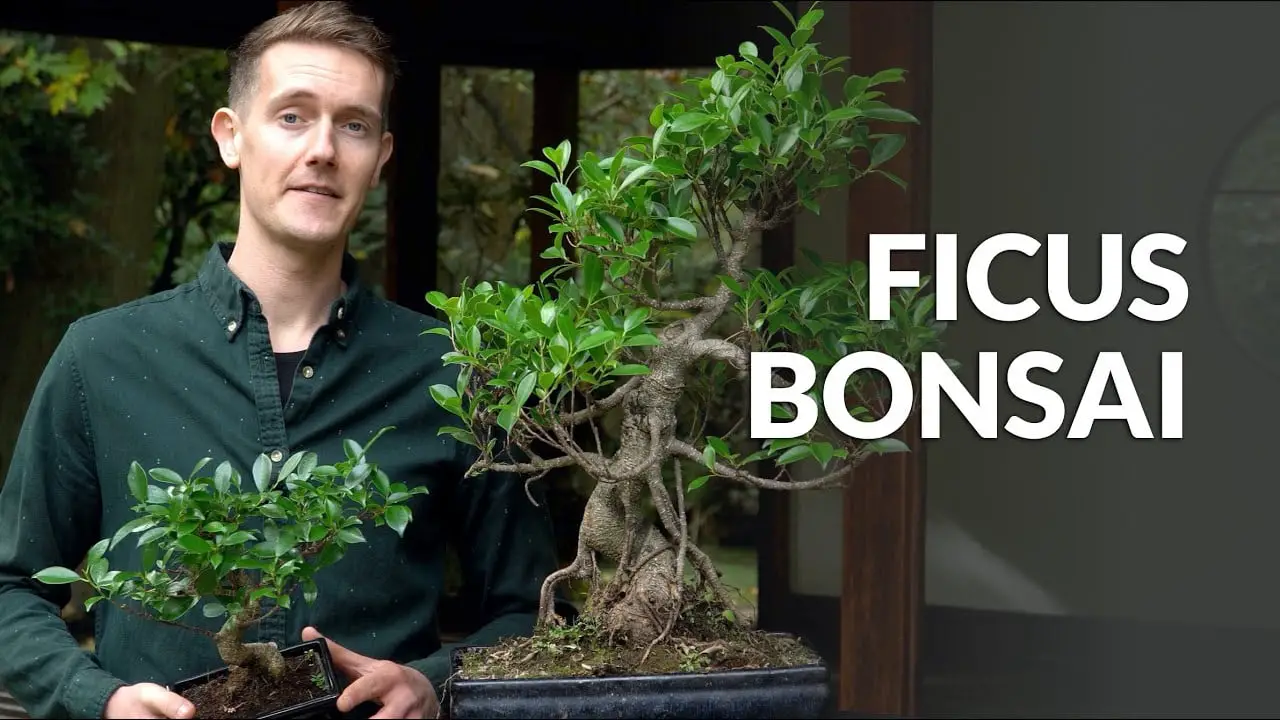

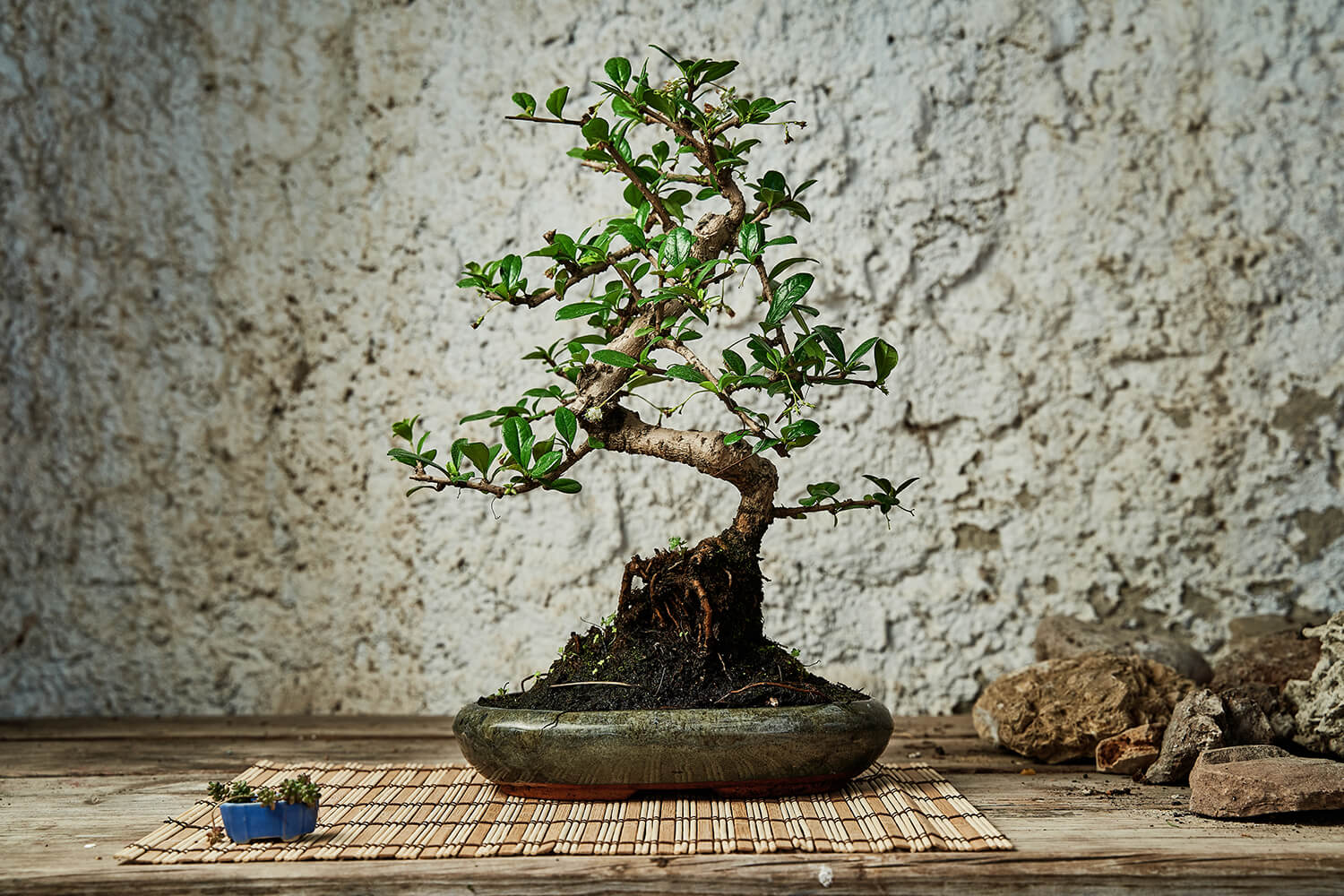
:max_bytes(150000):strip_icc()/growing-ginseng-ficus-bonsai-5083016-hero-3f7e663f55fc4470b2ec1e8f9fb45545.jpg)
